In recent years, vertical gardens have gained significant popularity as a creative and space-efficient solution for urban dwellers and gardening enthusiasts alike. These lush green spaces not only add a touch of natural beauty to our surroundings but also offer a range of benefits, including improved air quality, reduced noise pollution, and enhanced well-being. In this article, we will explore the concept of vertical gardening, its advantages, and provide you with valuable insights on how to create your own stunning vertical garden.
Understanding Vertical Gardens
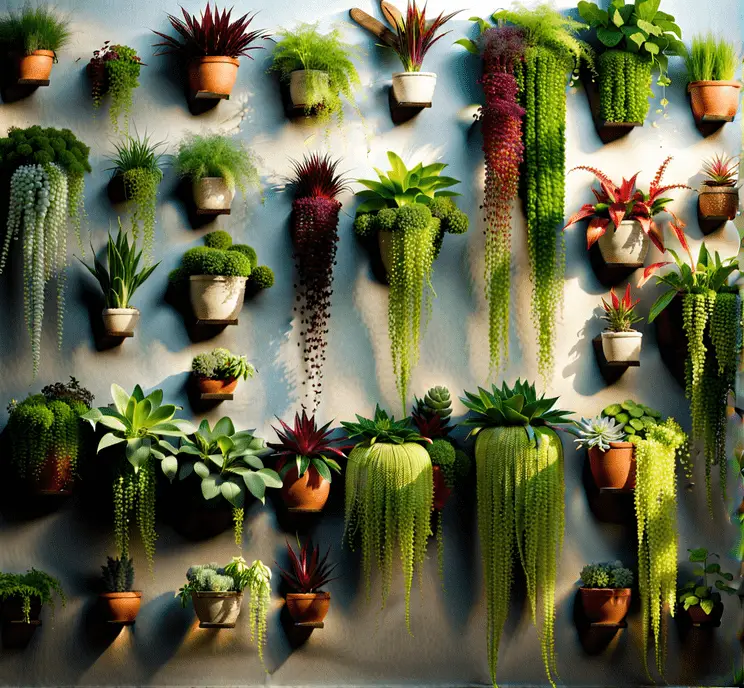
Vertical gardening involves growing plants vertically, either on walls, fences, or specialized structures, rather than in traditional horizontal beds. It is an innovative way to maximize space and transform dull areas into vibrant living environments. With vertical gardens, you can cultivate a wide variety of plants, including flowers, herbs, vegetables, and even small trees, all within a limited footprint.
Benefits of Vertical Gardens
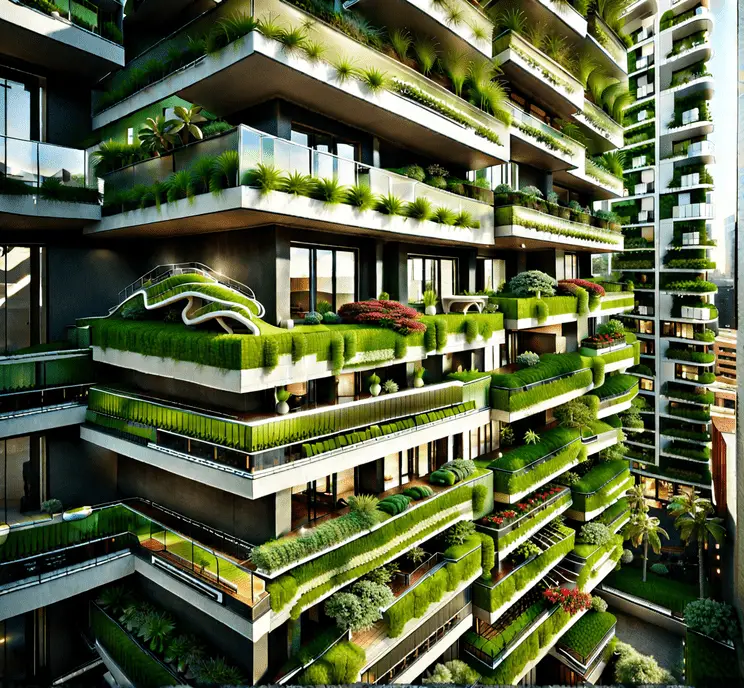
Vertical gardens offer numerous advantages that make them a compelling choice for both indoor and outdoor spaces. Some key benefits include:
a. Space Optimization
Vertical gardens are ideal for urban settings where space is limited. By utilizing vertical surfaces, you can create beautiful green areas even in the smallest of spaces, such as balconies, rooftops, or tiny courtyards.
b. Improved Air Quality
Plants play a crucial role in purifying the air by absorbing carbon dioxide and releasing oxygen. Vertical gardens can significantly enhance air quality, particularly in urban areas where pollution levels are high, contributing to a healthier living environment.
c. Noise Reduction
The dense foliage of vertical gardens acts as a natural sound barrier, reducing noise pollution from nearby roads or bustling city life. The plants absorb and scatter sound waves, creating a more peaceful and serene atmosphere.
d. Aesthetic Appeal
Vertical gardens are visually striking and add a touch of natural beauty to any space. The combination of different plant species, textures, and colors creates a stunning living tapestry that can be admired and enjoyed by both residents and visitors.
Getting Started with Your Vertical Garden
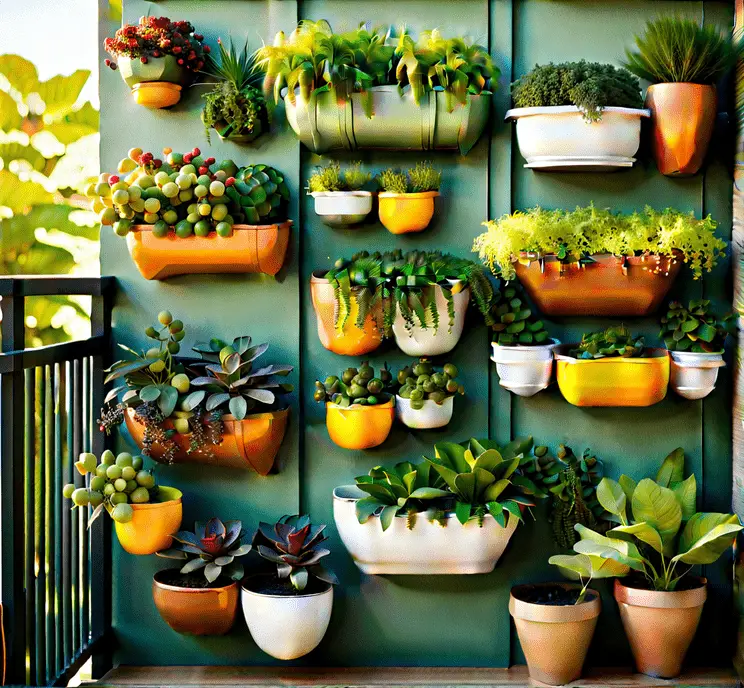
Now that we’ve covered the benefits of vertical gardens, let’s dive into the process of creating your very own green oasis.
a. Choosing the Right Location
Selecting the ideal location for your vertical garden is crucial for the success of your plants. Consider factors such as sunlight exposure, wind patterns, and the structural integrity of the supporting surface. Most plants require ample sunlight, so aim for a location that receives at least six hours of direct sunlight each day.
b. Selecting the Appropriate Plants
When choosing plants for your vertical garden, it’s essential to consider their suitability for the given environment. Take into account factors such as light requirements, water needs, and the overall climate of your region. Opt for plants that thrive in vertical growing conditions and have similar growth habits to ensure they coexist harmoniously.
c. Vertical Garden Structures
There are various options available when it comes to the structure of your vertical garden. These include trellises, living walls, modular systems, and even repurposed materials such as pallets or gutters. Choose a structure that suits your space, aesthetic preferences, and budget. Ensure the structure provides adequate support and proper drainage for the plants.
d. Soil and Irrigation
Using a high-quality soil mix is essential for the health and growth of your plants. Ensure the soil provides good drainage while retaining enough moisture to keep the plants hydrated. Consider installing an irrigation system, such as drip irrigation or a vertical garden-specific irrigation system, to provide consistent watering without overwatering or underwatering your plants.
Maintenance and Care
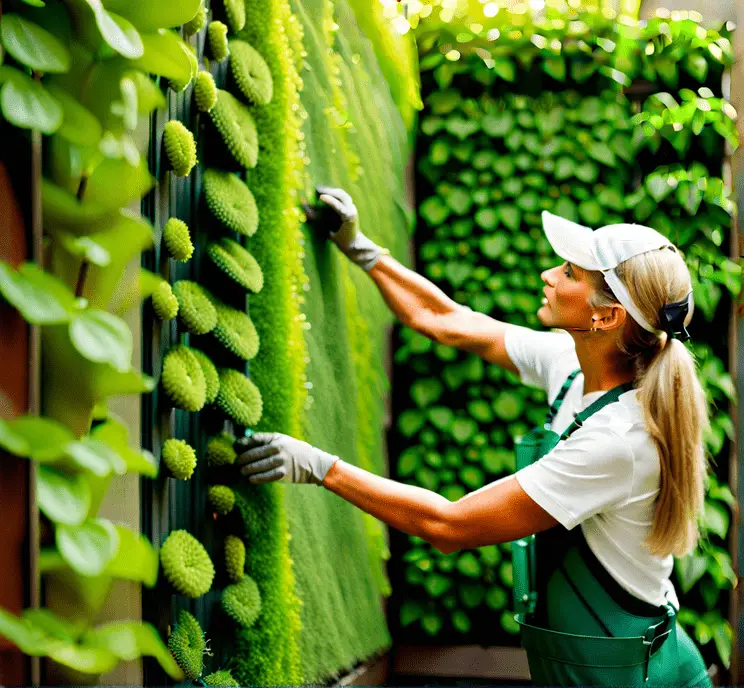
To keep your vertical garden thriving, regular maintenance is key. Here are some essential maintenance tasks:
a. Watering
Monitor the moisture levels in your vertical garden and water the plants accordingly. Different plants have different water requirements, so be mindful of individual needs. Avoid overwatering, as it can lead to root rot, and underwatering, which can cause plant stress and hinder growth.
b. Pruning and Trimming
Regularly trim and prune your plants to maintain their shape, prevent overcrowding, and encourage healthy growth. Remove any dead or diseased foliage promptly to prevent the spread of pests or diseases.
c. Fertilizing
Supplement the nutrient content of the soil by fertilizing your plants. Choose a suitable fertilizer based on the specific needs of the plant species in your vertical garden. Follow the instructions on the fertilizer packaging to ensure proper application and avoid overfertilizing, which can harm the plants.
Vertical gardens provide an exciting and practical way to incorporate nature into our living spaces. Their unique ability to optimize space, enhance air quality, reduce noise pollution, and offer aesthetic appeal makes them a desirable option for both urban and suburban environments. By carefully selecting the right location, plants, and structures, and maintaining your vertical garden with regular care, you can create a vibrant and sustainable green oasis that will bring joy and beauty to your surroundings for years to come. So, let your creativity flourish and embark on the journey of creating your own stunning vertical garden today.
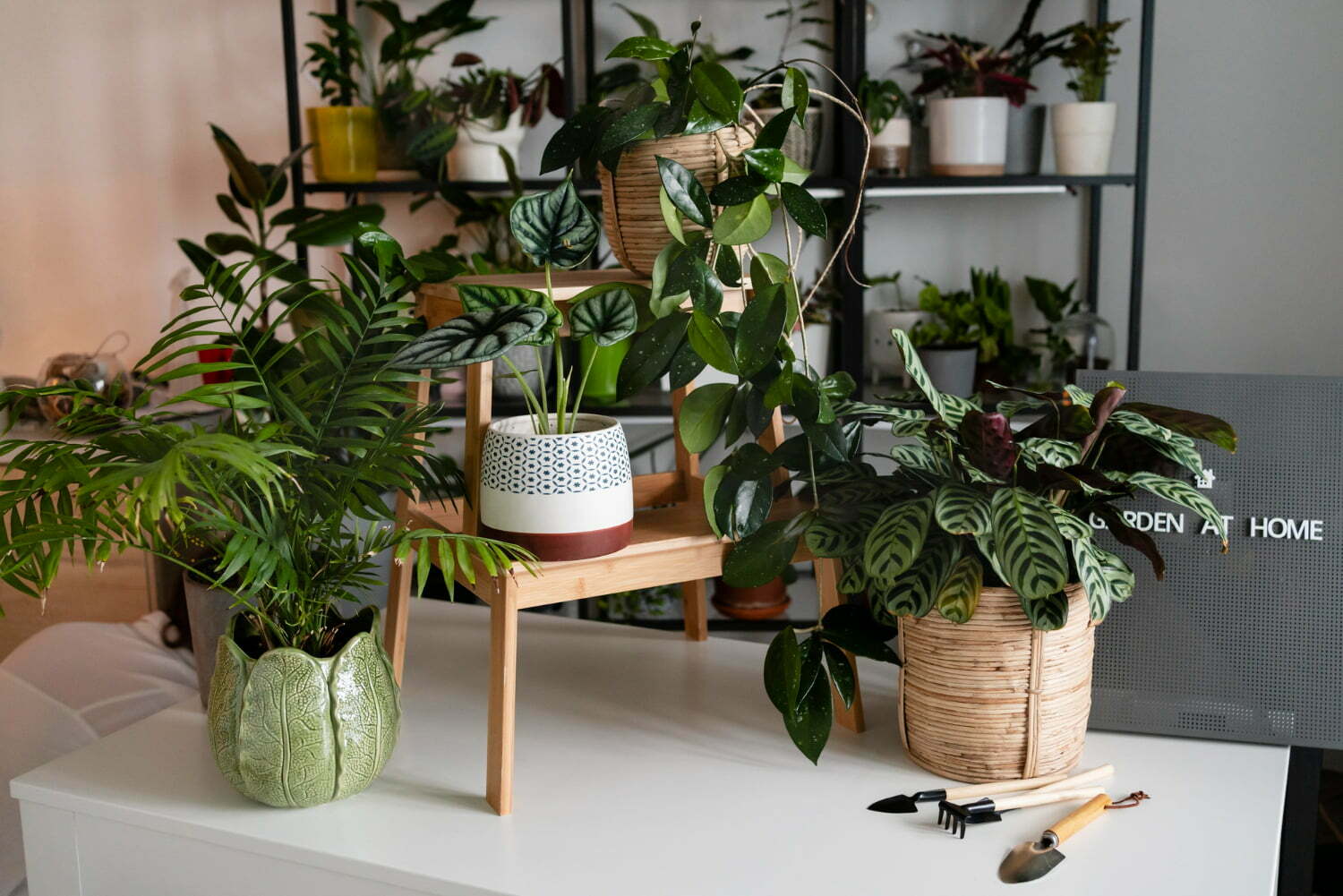
Comments are closed.